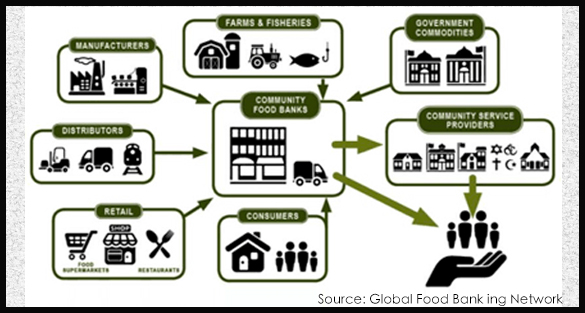A food bank is an interconnected lifeline to the hungry and an essential community asset.
Food banks form networks of warehouses, transportation systems, distribution centers, volunteers, agencies and organizations that serve as lifelines to disconnected and hungry people. They engage caring people from all sectors of the community, and become a vehicle for building public awareness about hunger and its solutions, as well as a powerful voice in driving policy decisions that impact the food security of individuals and communities.
Why Food Bank Systems Work?
Broad-based support
Food banks represent a coordinated response to alleviating hunger that engages government, the private sector, and civil society. People everywhere respect and understand that no one should go hungry – Hunger has no friends.
Practical, efficient, and effective
Food banking has broad and instinctive appeal. It feeds people while reducing waste. It empowers through school feeding programs, job training and skills development, and nutrition education.
Scalable
Food banking can begin at the community or at the national level, grow into a network, and expand to serve a state, a nation, and the world.
Adaptable
Food banking can be adapted across different cultures, geographies, and economies to ensure that it makes sense in the local reality.
Non-competitive with commercial channels of distribution
Food banking is an effective distribution outlet for business, government, and farmers. It does not compete with existing commercial markets.
Source: Global Food Banking Network










